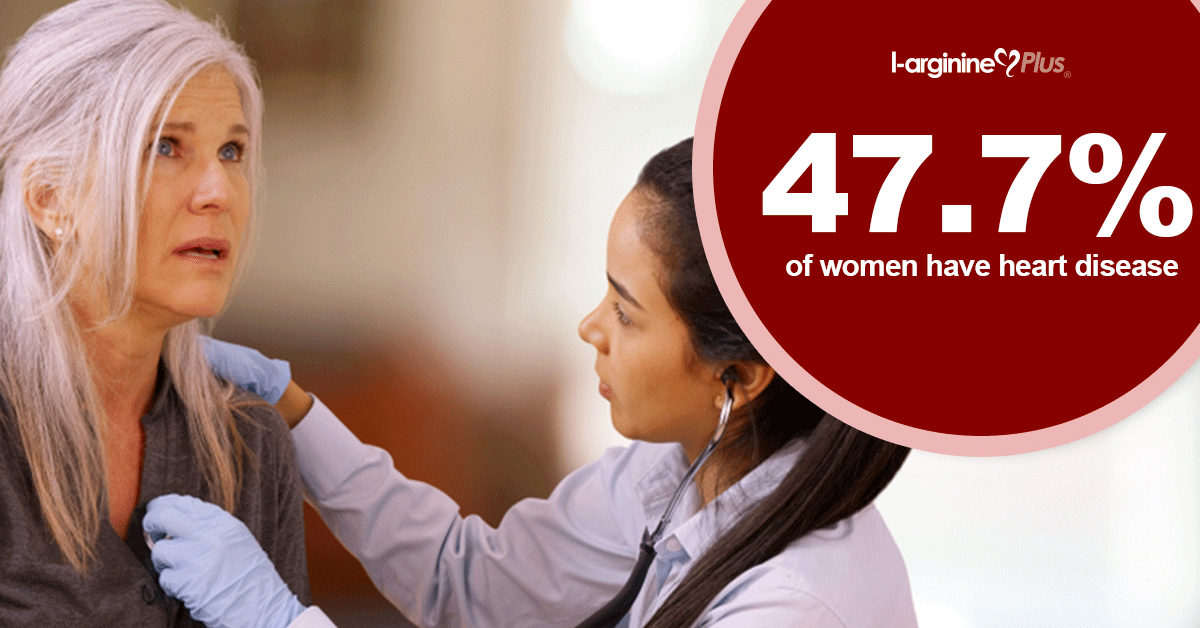In the U.S., 1 in 3 women dies of heart disease this year. Likewise, heart disease continues to be the number one killer of women.
Statistics from 2017 show that 47.7% of women have some form of cardiovascular disease.
“We want to spread the word that heart disease is the No. 1 killer in women in the United States,” Dr. Poornima said Friday at a Go Red for Women luncheon at Allegheny General Hospital in Pittsburgh. Different types of cardiovascular disease include heart attack, stroke, heart failure, heart valve problems and arrhythmia.
Misconceptions
There are several misconceptions about heart disease in women, and they could be putting them at risk. The American Heart Association’s Go Red For Women movement advocates for more research and swifter action for women’s heart health for this very reason.
As with men, women’s most common heart attack symptom is chest pain or discomfort. However, women are more likely than men to experience other symptoms, particularly shortness of breath, nausea/vomiting, and back or jaw pain. Consequently, thinking that chest pain is the only symptom of a heart attack can put a woman’s life at risk.
Antionette’s Story
Antoinette Jucha, 78, shared her story at the luncheon about finding out the hard way. In 2000, she was diagnosed and treated for atrial fibrillation (irregular heartbeat). Later, in 2014 she received a new heart valve. In 2015, her husband’s cancer treatment and the tragic death of her son kept her from going to her doctor even though she still felt a lack of energy. “I was just tired,” Ms. Jucha told people attending the heart luncheon.
Later on, one day getting ready for a work meeting, she collapsed on the floor. After getting up and driving to the work meeting with her husband, she stayed in the car and passed out again. The next memory she had was waking up in her doctor’s office. Just lifting her arms up was extremely hard, she said, adding, “I felt like I was dragging a mattress.”
She was taken by ambulance to Allegheny General Hospital and ended up having a pacemaker implanted. “There were no symptoms; just tiredness,” she said. “The vital thing to tell people is, you don’t get these ordinary symptoms.” The sudden onset of unusual tiredness is an important symptom to recognize, but Dr. Poornima said even more common is a shortness of breath.
Hidden Symptoms
Because of this, Antoinette urges women to pay attention to the hidden symptoms of heart disease and not neglect taking care of their own health because they are taking care of others or are too busy to go to the doctor.
According to Dr. Poornima, two tests that you can do at home are:
• Are stairs you’re used to walking up harder to climb than usual?
• Are you able to carry your laundry basket, or your groceries from the car, up the stairs without shortness of breath?
Other symptoms can be any combination including neck, jaw, shoulder, back or abdominal discomfort; pain in an arm; nausea; sweating and dizziness.
Educate Yourself
Dr. Poornima cautions that it’s not just older women who are at a higher risk of a heart attack. Women under 50 are also experiencing heart attacks. Among younger women, obesity, high blood pressure, preeclampsia during pregnancy (older mothers at greater risk), premature delivery and high stress are all risk factors for heart disease later in life.
“You just need one visit to get a risk assessment,” Dr. Poornima said. “Ideally we see them before they have a heart attack”.
If a woman is high risk, she should see her doctor once a year to do tests and track her progress. For example, doctors can advise weight loss tips, controlling blood pressure, lifestyle management and if necessary prescribe medication.
Educating more women about heart disease is the goal of Go Red for Women. For more details visit their website. In conclusion, if you are a woman experiencing any of these symptoms or risks, please make an appointment to see your doctor to discuss.
Learn more about how L-arginine Plus® can support the health of your heart

